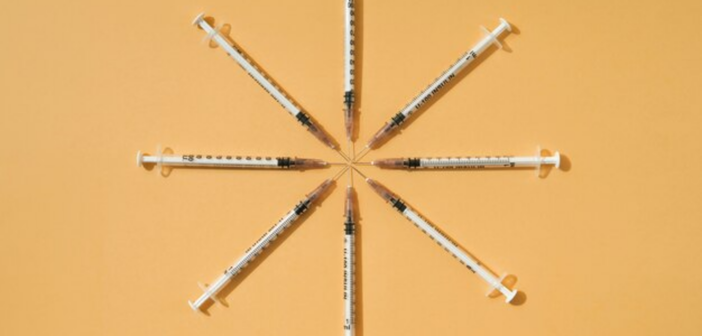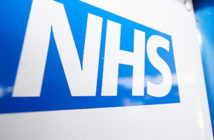Syringes are indispensable tools in healthcare, often overlooked until needed, yet vital for medical procedures. At the forefront of each syringe lies the needle – a small but critical component designed for specific tasks like administering medication, drawing blood, or delivering vaccines.
Whether you’re administering medication, drawing blood, or injecting vaccines, choosing the right needle is paramount. So, explore the world of the syringe needle and look at the different types and their uses.
The Basics: Anatomy of a Syringe Needle
Before we jump into the types of syringe needles, let’s quickly brush up on the basics. A typical syringe needle consists of three main parts: the hub, shaft, and bevel. The hub is the part that attaches to the syringe, while the shaft is the long, slender portion that delivers the medication. At the very tip is the bevel, which is the angled point that pierces the skin. Understanding these components will help us grasp the nuances of different needle types.
Gauge Matters: Understanding Needle Size
One of the most crucial aspects of a syringe needle is its gauge. The gauge refers to the diameter of the needle, and it’s denoted by a numerical value. Common gauges range from 18 to 30, with lower numbers indicating larger diameters. For instance, an 18-gauge needle is thicker than a 30-gauge needle. The choice of gauge depends on factors such as the viscosity of the medication and the injection site. Thicker needles are ideal for viscous fluids or intramuscular injections, while thinner needles are preferred for delicate areas or subcutaneous injections.
Types of Syringe Needles
Now, let’s explore some of the most commonly used types of syringe needles and their respective applications:
1. Hypodermic Needles
Hypodermic needles are perhaps the most familiar type, featuring a sharp bevel for subcutaneous or intramuscular injections. They come in various gauges and lengths to accommodate different medications and injection sites. These versatile needles are suitable for administering vaccines, insulin, or other medications that require deep tissue penetration.
2. Insulin Needles
Insulin needles, also known as insulin syringes, are specifically designed for administering insulin injections. They are typically shorter in length and finer in gauge to minimise discomfort for patients. Insulin needles often come with integrated syringe barrels calibrated for insulin units, making them convenient for diabetic patients who require frequent injections.
3. Intravenous (IV) Needles
Intravenous needles, also called IV catheters or cannulas, are used for accessing veins for intravenous therapy or blood withdrawal. Unlike hypodermic needles, IV needles have a hollow bore that allows for the infusion of fluids or the withdrawal of blood. They come in various sizes, with larger gauges for rapid fluid administration and smaller gauges for delicate veins or pediatric patients.
4. Butterfly Needles
Butterfly needles, also known as winged infusion sets, are characterized by their winged design and flexible tubing. These needles are commonly used for drawing blood or administering medications to patients with fragile or inaccessible veins. The wings provide stability during insertion, while the flexible tubing minimizes the risk of vein damage. Butterfly needles are particularly useful in situations where repeated venipuncture is necessary, such as blood donation or chemotherapy.
5. Spinal Needles
Spinal needles, also referred to as spinal or lumbar puncture needles, are designed for accessing the spinal canal for diagnostic or therapeutic purposes. These needles have a sharp bevel and are typically longer and thicker than standard hypodermic needles. Spinal needles are used in procedures such as spinal anaesthesia, myelography, or the collection of cerebrospinal fluid for testing.
6. Dental Needles
Dental needles are specially designed for administering local anaesthesia in dental procedures. They are typically shorter and finer than standard hypodermic needles, making them suitable for precise injections in the oral cavity. Dental needles often feature an ultra-short bevel to minimize tissue trauma and enhance patient comfort during dental anaesthesia.
Choosing the Right Needle
With so many types of syringe needles available, choosing the right one can seem daunting. Here are a few tips to help you make the best selection:
- Consider the viscosity of the medication: Thicker medications may require larger gauge needles to facilitate smooth injection.
- Assess the injection site: Choose a needle length and gauge that are appropriate for the intended injection site, taking into account factors such as tissue depth and patient comfort.
- Minimize patient discomfort: Opt for finer gauge needles and shorter lengths whenever possible to reduce pain and tissue trauma for the patient.
- Prioritize safety: Select needles with safety features such as retractable or shielded designs to minimize the risk of needlestick injuries for healthcare providers.
FAQs About Syringe Needles
Q: What is the difference between gauge and length when it comes to syringe needles?
A: Gauge refers to the diameter of the needle, with lower numbers indicating larger diameters. Length, on the other hand, refers to the distance from the tip of the needle to the hub. Both gauge and length play a crucial role in determining the suitability of a needle for a specific application.
Q: How do I choose the right gauge for my syringe needle?
A: The choice of gauge depends on factors such as the viscosity of the medication and the injection site. Thicker medications or deep tissue injections may require larger gauge needles, while thinner needles are suitable for delicate areas or subcutaneous injections.
Q: What are safety features in syringe needles, and why are they important?
A: Safety features in syringe needles include retractable or shielded designs that help minimize the risk of needlestick injuries for healthcare providers. These features are essential for protecting healthcare workers from exposure to bloodborne pathogens and enhancing overall safety in healthcare settings.
Q: Are there needles specifically designed for pediatric patients?
A: Yes, there are needles specifically designed for pediatric patients, with features such as smaller gauges and shorter lengths to accommodate the unique needs of children. These needles help minimize discomfort and reduce the risk of injury in pediatric patients.
Q: Can I reuse syringe needles?
A: It is not recommended to reuse syringe needles due to the risk of contamination and infection. Reusing needles can lead to the transmission of bloodborne pathogens and compromise patient safety. It is best to use a new, sterile needle for each injection or procedure.
Q: How should I dispose of used syringe needles safely?
A: Used syringe needles should be disposed of in puncture-resistant containers specifically designed for sharps disposal. These containers should be sealed when full and disposed of according to local regulations for medical waste management. It is essential to follow proper disposal procedures to prevent needlestick injuries and protect public health.
Q: Can I purchase syringe needles without a prescription?
A: In many regions, syringe needles are available for purchase without a prescription for medical or veterinary use. However, regulations regarding the sale and distribution of syringe needles may vary depending on local laws and policies. It is advisable to check with local authorities or healthcare providers for guidance on purchasing syringe needles legally and safely.
Conclusion
Syringe needles may be small, but their impact is immense in the world of healthcare. From administering life-saving medications to facilitating diagnostic procedures, the right needle can make all the difference. By understanding the different types of syringe needles and their respective uses, healthcare professionals can ensure safe and effective patient care. So, the next time you pick up a syringe, take a moment to appreciate the tiny yet vital needle at its tip – it’s a true hero in its own right.




